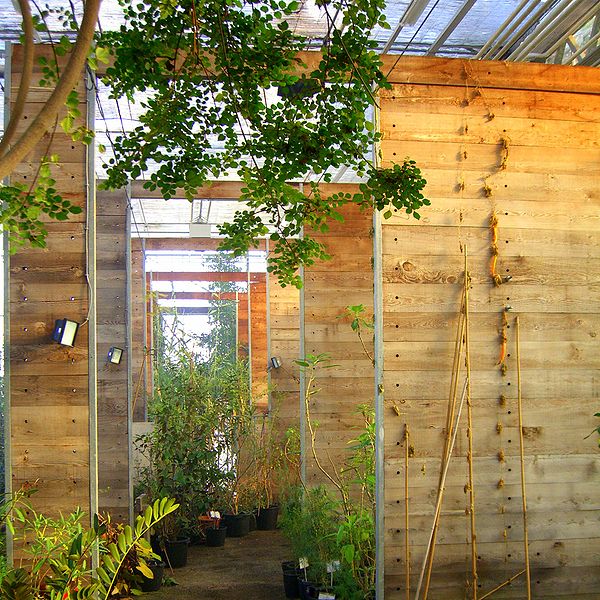The Softwood Lumber Board (SLB) and the Binational Softwood Lumber Council (BSLC) congratulated the U.S. Department of Agriculture on the formal launch of the U.S. Tall Wood Building Prize Competition.
The competition invites U.S. developers, institutions, organizations and design teams willing to undertake an alternative solution approach to designing and building taller wood structures to submit entries for a prize of $2 million.
Following a funding initiative announced by the Obama Administration and the U.S. forestry industry through the USDA, SLB and BSLC earlier this year, the goal of the prize competition is to link rural U.S. technical expertise and products with evolving domestic and international market opportunities to showcase the application and sustainability of innovative wood-based structural building materials and solutions.
The objective of the competition is to identify proponents with building project(s) in the concept-, schematic- or design-development stage in the U.S. that can safely and successfully demonstrate the use of wood as a viable structural material in tall buildings.
Above and beyond the safety, environmental and economic benefits of wood, the initiative will challenge developers, designers, building officials, builders and manufacturers to further develop and refine specification and use of structural wood products - ultimately expanding the opportunity for new product and market development.
Marc Brinkmeyer, SLB Board Chair explained, “There is a breadth of wood-related building science, design and construction that’s underway internationally. In recent years we’ve seen a number of buildings over seven stories constructed around the world, including the 10-story Forte building in Melbourne, Australia and the 14-story Treet building in Bergen, Norway."
The opportunity to learn from what’s been done elsewhere, and build on it here in the U.S., is very exciting for our industry, our employees and communities. I am equally thrilled and appreciative of the partnership that industry has forged with the USDA on this competition, and am looking forward to seeing the great wood-based projects that will result. Wood truly is an optimal choice for the environment and economy.”
The competition is the first step of a new USDA and forest industry initiative that is designed to support rural U.S. communities. Submissions that meet the criteria of the competition will be evaluated by an expert panel of design and building professionals. The full Official Rules document, related background information and contact details can be found on the prize competition website.
Related Stories
Industry Research | Jan 23, 2024
Leading economists forecast 4% growth in construction spending for nonresidential buildings in 2024
Spending on nonresidential buildings will see a modest 4% increase in 2024, after increasing by more than 20% last year according to The American Institute of Architects’ latest Consensus Construction Forecast. The pace will slow to just over 1% growth in 2025, a marked difference from the strong performance in 2023.
Giants 400 | Jan 23, 2024
Top 110 Medical Office Building Architecture Firms for 2023
SmithGroup, CannonDesign, E4H Environments for Health Architecture, and Perkins Eastman top BD+C's ranking of the nation's largest medical office building architecture and architecture engineering (AE) firms for 2023, as reported in the 2023 Giants 400 Report.
Giants 400 | Jan 22, 2024
Top 100 Outpatient Facility Architecture Firms for 2023
HDR, CannonDesign, Stantec, Perkins&Will, and ZGF top BD+C's ranking of the nation's largest outpatient facility architecture and architecture engineering (AE) firms for 2023, as reported in the 2023 Giants 400 Report. Note: This ranking includes design revenue for work related to outpatient medical buildings, including cancer centers, heart centers, urgent care facilities, and other medical centers.
Construction Costs | Jan 22, 2024
Construction material prices continue to normalize despite ongoing challenges
Gordian’s most recent Quarterly Construction Cost Insights Report for Q4 2023 describes an industry still attempting to recover from the impact of COVID. This was complicated by inflation, weather, and geopolitical factors that resulted in widespread pricing adjustments throughout the construction materials industries.
Transit Facilities | Jan 22, 2024
Top 40 Transit Facility Architecture Firms for 2023
Perkins&Will, HDR, Gensler, Skidmore, Owings & Merrill, and HNTB top BD+C's ranking of the nation's largest transit facility architecture and architecture engineering (AE) firms for 2023, as reported in the 2023 Giants 400 Report. Note: This ranking includes design revenue for work related to bus terminals, rail terminals, and transit stations.
Hotel Facilities | Jan 22, 2024
U.S. hotel construction is booming, with a record-high 5,964 projects in the pipeline
The hotel construction pipeline hit record project counts at Q4, with the addition of 260 projects and 21,287 rooms over last quarter, according to Lodging Econometrics.
Modular Building | Jan 19, 2024
Virginia is first state to adopt ICC/MBI offsite construction standards
Virginia recently became the first state to adopt International Code Council/Modular Building Institute off-site construction standards.
Office Buildings | Jan 19, 2024
How to strengthen office design as employees return to work
Adam James, AIA, Senior Architect, Design Collaborative, shares office design tips for the increasingly dynamic workplace.
Modular Building | Jan 19, 2024
Building with shipping containers not as eco-friendly as it seems
With millions of shipping containers lying empty at ports around the world, it may seem like repurposing them to construct buildings would be a clear environmental winner. The reality of building with shipping containers is complicated, though, and in many cases isn’t a net-positive for the environment, critics charge, according to a report by NPR's Chloe Veltman.
Adaptive Reuse | Jan 18, 2024
Coca-Cola packaging warehouse transformed into mixed-use complex
The 250,000-sf structure is located along a now defunct railroad line that forms the footprint for the city’s multi-phase Beltline pedestrian/bike path that will eventually loop around the city.

















